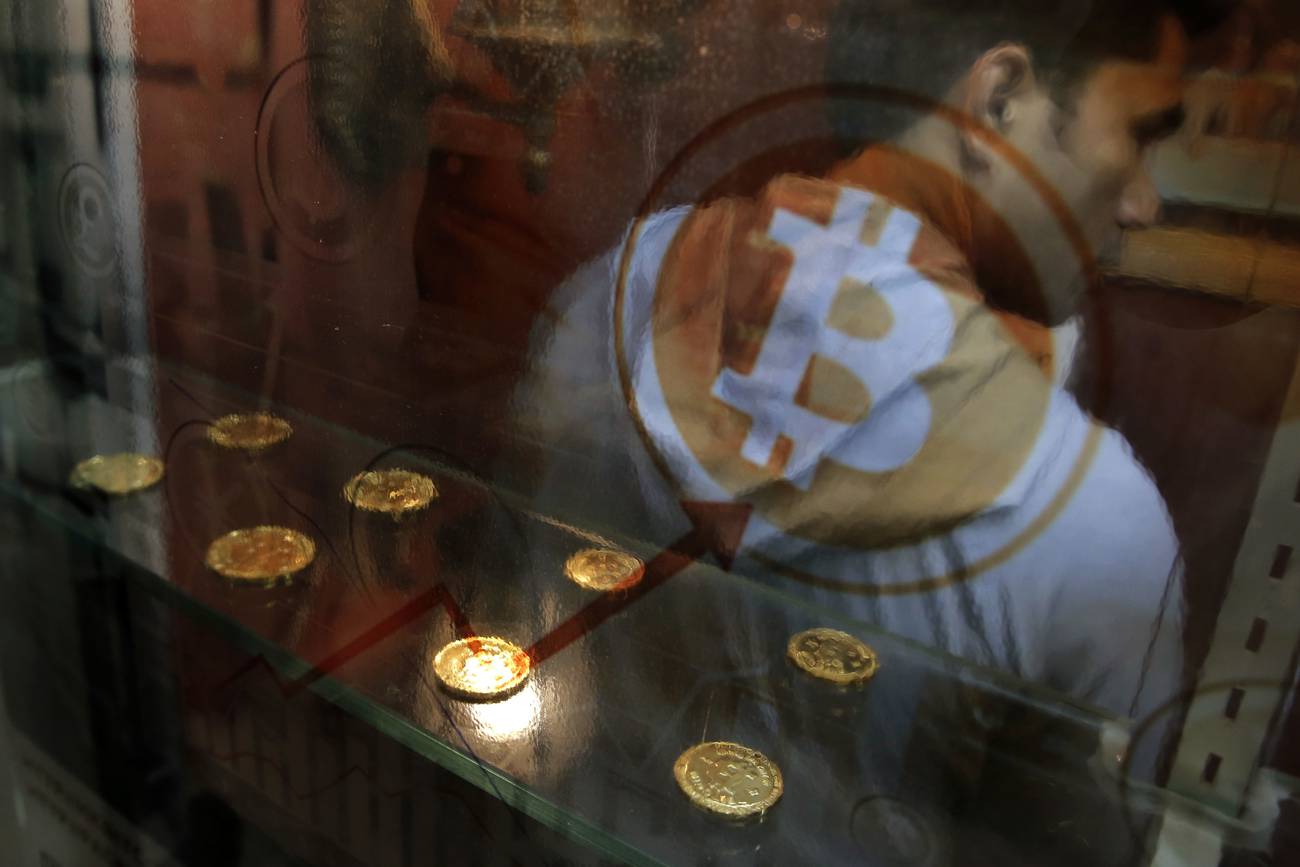The spread of cryptocurrencies, especially bitcoin, raises several questions. What exactly are they? How do they work? What does the slang behind it mean? What consequences do they have for States, and even for democracy?

Bitcoin was born in 2008, the same year that Lehman Brothers declared bankruptcy. On October 31 of that year, a user identified as Satoshi Nakamoto posted on the “Cryptography” mailing list a message that read: “I have been working on a new electronic money system that is fully peer-to-peer, without third parties.” trustworthy. In addition, it contained a link to the document hosted on the bitcoin.org site known as a “white paper” where the operation of the system was explained point by point. In reality, no one knows Nakamoto’s true identity.
Bitcoin was the first digital currency that managed to transfer value between users without the need for a central authority to verify transactions. The idea, as simple as it sounds, gave rise to an unprecedented monetary revolution. On January 9, 2009, Nakamoto released version 0.1 of the Bitcoin client (today known as Bitcoin Core), an open source software that connected several computers together, and this gave rise to the network that would support the cryptocurrency. The network’s tasks were, on the surface, simple: allow transactions between users, make a list of all transactions, verify that the same currency is not spent twice, and issue new monetary units.
That same day, at 00:54, the first bitcoin block was mined and with it the first units were created. Three days later, on January 12, 2009, Hal Finney, one of the most prominent members of the Cryptography mailing list, received the first bitcoin transaction in history. On April 26, 2011, Nakamoto sent his last message and disappeared from public view. Three years later, on August 28, 2014, Finney died from advanced amyotrophic lateral sclerosis. His body is preserved in a state of cryogenics in the laboratories of the Alcor Life Extension Foundation.
Along with Nick Szabo, Finney is recognized as one of the pioneers of Bitcoin and one of the main suspects of being Satoshi Nakamoto or, at least, of having had close contact with the anonymous character.
What is bitcoin?
Bitcoin, in addition to being the name of the currency, is the network that supports it: a peer-to-peer (p2p) network, without intermediaries, that allows value to be sent from one part of the planet to another without asking anyone’s permission, at a relatively low cost. low, semi-anonymously, quickly and totally irreversible. These features allow Bitcoin to be immune to censorship attempts by any nation, company, or authority.
Users can transfer bitcoins across the network to do almost anything that can be done with conventional currencies, such as buy and sell goods and services or send money to another person, and some platforms even allow you to receive or grant credit using bitcoins. Bitcoins can be bought, sold and exchanged for other currencies in specialized exchange houses. Unlike traditional currencies, Bitcoin is completely virtual. There are no physical coins that represent it.
Network users have a series of keys (known as private keys) that allow them to prove ownership of bitcoin. With these keys you can make transactions with other users on the network. The keys are stored in digital wallets, which can be on a personal computer, on the phone, and even on specific hardware designed for this purpose. Private keys that allow transactions are the only prerequisite for sending bitcoins, thus leaving full control of their funds in the hands of users.
What is mining?
Each unit of Bitcoin is created in a process called “mining.” Certain nodes on the network, called miners, compete to find the solution to a mathematical problem while bitcoin transactions are processed. Any participant in the Bitcoin network can become a miner, as long as they make their computer’s processing power available to verify and record transactions.
Every ten minutes, on average, a Bitcoin miner competes to validate all transactions from the last ten minutes and, if they manage to validate them, they get a reward in the form of bitcoins. This function is known as “proof of work”, or in English, proof of work.
Currently, the reward is 6.25 bitcoins per block mined, and every 210,000 blocks, the reward is halved. In this way, Bitcoin will reach a unit limit close to 21 million. This limit is deduced from the speed of issuance of new Bitcoin units, which is established in the network software. In addition, each unit of Bitcoin can be divided into 100 million parts, meaning that we can fractionate a bitcoin until we obtain 0.00000001 of each unit. That minimal unit is called satoshi.
The bitcoin protocol includes algorithms that regulate the mining function on the network. The difficulty of solving the mathematical problem that allows mining a block is automatically adjusted so that the validation time between one block and another is ten minutes, regardless of the number of miners that are competing at that moment. The number of bitcoins in circulation takes the shape of a predictable curve that approaches 21 million by the year 2140. Since the rate of issuance is decreasing, in the long run, Bitcoin is deflationary. It cannot be inflated by “printing” new money beyond the expected emission rate.
But just because it is a virtual currency does not mean that there is no “materiality” behind it. Mining bitcoins requires the use of electrical energy. With current conditions where competition is widespread, bitcoin mining becomes profitable in regions that have some comparative advantage, such as very cheap electricity. The greater the computing power, the greater the probability of solving a block and, therefore, of obtaining the reward. That is why “mining pools” were created to concentrate that firepower.
That is one of the reasons why Paraguay, for example, became one of the places from which “mining bitcoins” is profitable. “In Paraguay it is still profitable to mine bitcoins because we have the lowest cost of electrical energy in the region,” says Luis Pomata, CEO and co-founder of Nano Mining Paraguay. «The normal cost is 5 cents per KW/h and can even reach 3 cents per KW/h. It is something that is only seen in Asian countries or in some places in North America. And he adds that the South American country also has “low technical labor costs and finally, warehouses/sheds can be purchased or rented to be used as data centers that meet the necessary requirements to house mining machines at a very affordable price.”
How do you get your value?
One of the most frequently asked questions about Bitcoin is “how does it get its value” or “what is it backed by?” In order to answer this, we must take a short historical detour. At the end of the Second World War, the need was imposed to create an international trade system that would avoid the imbalances that had led to the First War, the crash of the 1930s, the rise of fascism and, finally, again to confrontation. war and the Holocaust.
The United States, with the doctrine of liberal globalism at its head, held the hypothesis that a world open to trade was a world of peace. Thus, at the Bretton Woods conferences, the US dollar became the guarantor of international trade and, therefore, of peace. Until then, the dollar had a fraction of gold that guaranteed its “value.” Dollars, in short, were convertible to a portion of gold. But in 1971 Richard Nixon decreed the departure of the United States from the gold standard and then the US currency was no longer convertible to the precious metal. Thus, no global currency could now be convertible, via the dollar, to gold. This type of money is known as fiat or fiduciary money.
The “backing” of our currencies comes from the ability of States to force their use and declare other currencies illegal. The radical change between the gold standard and fiat money (which comes from the Latin fides, that is, faith) is even today, almost half a century away, a fact unknown to a large portion of the public. Our money has no backing other than the credibility of who issues it and the agreement between the parties that use it. In short, the value of money is a social relationship and hence, therefore, its inescapably political character.
The value of Bitcoin, beyond its particular characteristics such as scarcity, security, censorship resistance, immutability and reliability, depends on the agreement of all users. In that sense, Bitcoin is also, in some ways, a form of faith. The only difference with the money printed by the State or a bank (as may be the case in Hong Kong) is that the value is not associated with trust in a certain government, but with the trust placed in a cryptographic proof system.
This implies the destruction of the money monopoly by banks and States, and the empirical demonstration that a group of people who do not know each other, who do not have contact with each other and who do not even have the same interests or ideology can generate consensus through through sufficiently robust technology and correctly aligned incentives.
What differentiates it from other cryptocurrencies? Is there a competition between them?
Being the first cryptocurrency, bitcoin has a unique preponderance. It is the one that has been in existence the longest, the best known and the one that managed to overcome the most difficult moments. In addition, it has several elements that encourage its growth, among them, the price peak at $20,000, which could be surpassed. There are thousands of new cryptocurrencies, but few that truly bring something unique and significant to the space.
Ethereum, for example, is today the platform most chosen by developers interested in blockchain, given that it is not only a cryptocurrency, but it is a decentralized computer with the ability to execute immutable computer programs known as “smart contracts.” . More than competition, the emergence of non-bitcoin projects, with other scopes and goals, strengthens the space, provides alternatives and allows us to find solutions that may not be able to be executed so easily in the Bitcoin software.
Why can’t it be used for current transactions?
This depends a lot on the technology and price. While bitcoin was initially used as a means of payment, there were some issues that made it quite uncomfortable. The point is that only one block is validated every ten minutes, and that the block size limit allows only three transactions per second, which limits the capacity of the system and makes it inefficient if we think about purchases or sales in places such as cafes. , warehouses, greengrocers, etc. No one is going to wait there for their transaction to be validated. In addition, the problem of the transaction commission is added.
Although in a transaction of, for example, two bitcoins the cost is negligible, for small transactions (remember that one bitcoin can be divided into up to 100 million units) the commission could exceed the value of the transaction. In that sense, there are several proposals to solve this and convert bitcoin into a means of payment again. The most interesting, which uses the same Bitcoin blockchain, is called lightning network and is a protocol that works in a second layer of the blockchain and allows the creation of payment channels in which thousands of payments can be made in seconds and without cost. The only payment would be made when the channel closes and would be the equivalent of a normal network commission.
